In Fig 27.37, ε1=1.00V,ε2=3.00V,R1=4.00Ω,R2=2.00Ω,R3=5.00Ω, both batteries are deal. What is the latest which energy is dissipated in (a) R1,(b)R2and(c)R3? What is the power of (d) battery 1 and (e) ballery 2? Is energy being absorbed or provided in (f) battery and (g) battery 2?
The correct Answer is:(a) 0.177W; (b) 0.670 W (c) 0.679W ; (d) 0.211 W (e) +174W (f) The negative sign indicates that ε1 is actually absorbing energy from the circuit (g) The positive sign indicates that ε2 is actually providing energy to the circuit.
Topper's Solved these Questions
- CIRCUITSBOOK - RESNICK AND HALLIDAYCHAPTER - CIRCUITSEXERCISE - Practice Questions (Single Correct Choice Type)
33 Videos
- CIRCUITSBOOK - RESNICK AND HALLIDAYCHAPTER - CIRCUITSEXERCISE - Practice Questions (More than One Correct Choice Type)
12 Videos
- CIRCUITSBOOK - RESNICK AND HALLIDAYCHAPTER - CIRCUITSEXERCISE - Checkpoints
7 Videos
- CENTER OF MASS BOOK - RESNICK AND HALLIDAYCHAPTER - CENTER OF MASS EXERCISE - Practice Questions (Integer )
4 Videos
- CIRCULAR MOTIONBOOK - RESNICK AND HALLIDAYCHAPTER - CIRCULAR MOTIONEXERCISE - CHECK POINTS
6 Videos
Similar Questions
In Fig. 27-42, the resistances are R1=3.00Ω,R2=700Ω. and the battery is ideal. What value of R3 maximizes the dissipation rate in resistance 3?
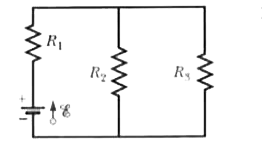
View SolutionIn Fig. 27-44, ε1=8.00V,ε2=12.0V,R1=100Ω,R2=200Ω,R3=300Ω. One point of the circuit is grounded (V =0). What are the (a) size and (b) direction (up or down) of the current through resistance 1, the (c) size and (d) direction (left or right) of the current through resistance 2, and the (e) size and (f) direction of the current through resistance 3? (g) What is the electric potential at point A?
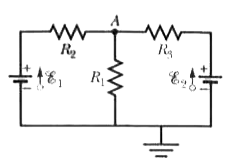
View Solution
Knowledge Check
In the circuit shown, E1=7V,E2=7V,R1=R2=1Ω and R3=3Ω respectively. The current through the resistance R3
 A0.083333333333333B3.5 AC1.75 ADnone of these
A0.083333333333333B3.5 AC1.75 ADnone of these
In Fig 27-50,ε=24.0V,R1=2000Ω,R2=3000ΩandR3=4000Ω. What are the potential differences (a) VA−VB (b) VB−VC (c) VC−VDand(d)VA−VC?
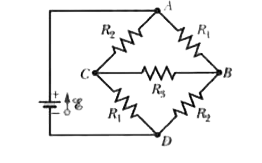
View SolutionIn Fig. 27-40, R1=100Ω,R2=R3=50.00Ω,R4=75.0Ω, and the ideal battery has emf ε=12.0V. (a) What is the equivalent resistance? What is i in (b) resistance 1, (c) resistance 2,(d) resistance 3, and (e) resistance 4?
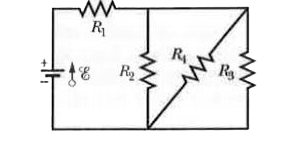
View SolutionIn Fig. 27-43, the current in resistance 6 is i6=2.80A the resistances are R1=R2=R3=2.00Ω,R4=16.0Ω,R5=8.00ΩandR6=4.00Ω. Wat is the emf of the ideal battery?

View SolutionIn Fig 27-56, the ideal batteries have emf emf12=200Vandε2=50V and the resistances are R1=3.0ΩandR2=2.0Ω. If the potential at P is 100 V, what is at at Q?
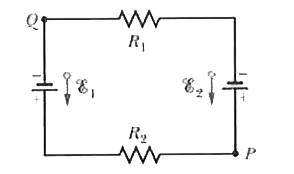
View SolutionIn the circuit shown, E1=7V,E2=7V,R1=R2=1Ω and R3=3Ω respectively. The current through the resistance R3

View SolutionIn the circuit shown, E1=7V,E2=7V,R1=R2=1Ω and R3=3Ω respectively. The current through the resistance R3

View SolutionIf in Fig. 12.12, R1=10Ω,R2=40Ω,R3=30Ω,R5=60Ω, and a 12 V battery is connected to the arrangemtn. Calculate (a) the total resistance in the circuit, and (b) the total current flowing in the circuit.
View Solution
